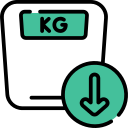Q. What part of the body has the most nerve endings?
Doctor Answer is medically reviewed by SecondMedic medical review team.
The body part with the most nerve endings is undoubtedly the fingertips. Each fingertip houses approximately 3,000 nerve endings known as Meissner's corpuscles, specifically designed to detect light touch and vibrations. As a result, our fingertips are highly sensitive, enabling us to perceive sensations with exceptional intensity compared to other parts of the body. This heightened sensitivity becomes evident when playing musical instruments or typing on a keyboard, as the tactile receptors help us sense changes in pressure and movement.
Although fingertips boast the highest concentration of nerve endings per square inch, other areas such as the lips, tongue, and genitals also contain unique types of nerves responsible for providing distinct sensory experiences. For example, our mouths allow us to taste, while our genitalia can elicit sexual pleasure. Recent research also suggests that even hair follicles can possess small nerve networks connected to them, allowing them to respond rapidly to physical cues such as wind speed or temperature changes, often before other receptors can register them.
While fingertips are indeed equipped with a remarkable number of nerve endings (over 3,000), it is important to recognize that intricate nerve networks exist throughout our bodies. These networks provide invaluable information about our internal and external environments, enhancing our ability to perceive and navigate the world around us effectively.
Related Questions
-
Bariatric Weight Reduction Surgery Who needs bariatric surgery?
-
How is life after bariatric surgery? | Secondmedic
-
Bariatric Weight Reduction Surgery How is Kratom absorbed if you
-
Is it possible to spot-reduce fat from specific areas of the body? | Secondmedic
-
What impact does sleep quality and quantity have on weight loss efforts? | Secondmedic
-
How does physical activity and exercise impact overweight individuals, and what are the recommended exercise routines or activities for weight management? | Secondmedic












